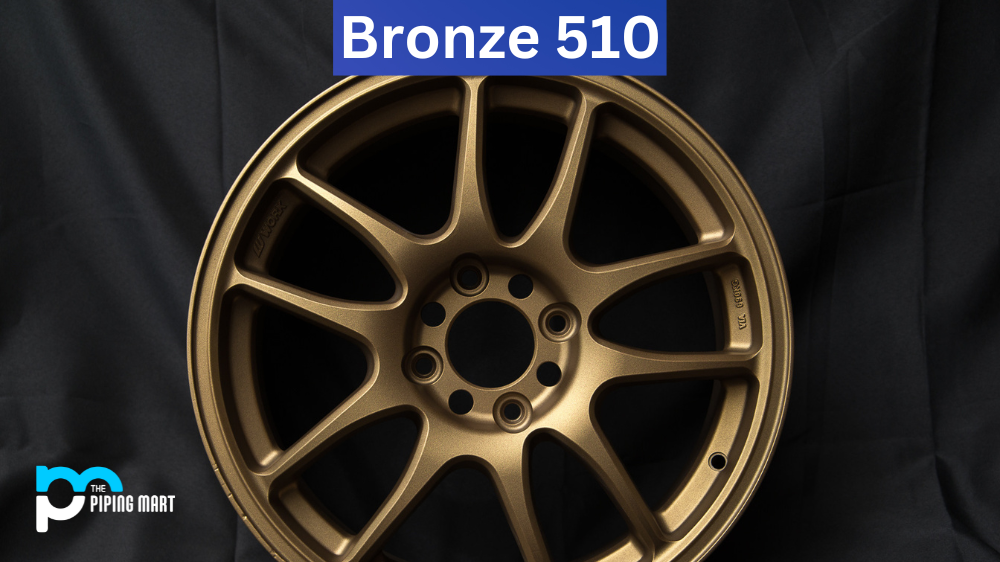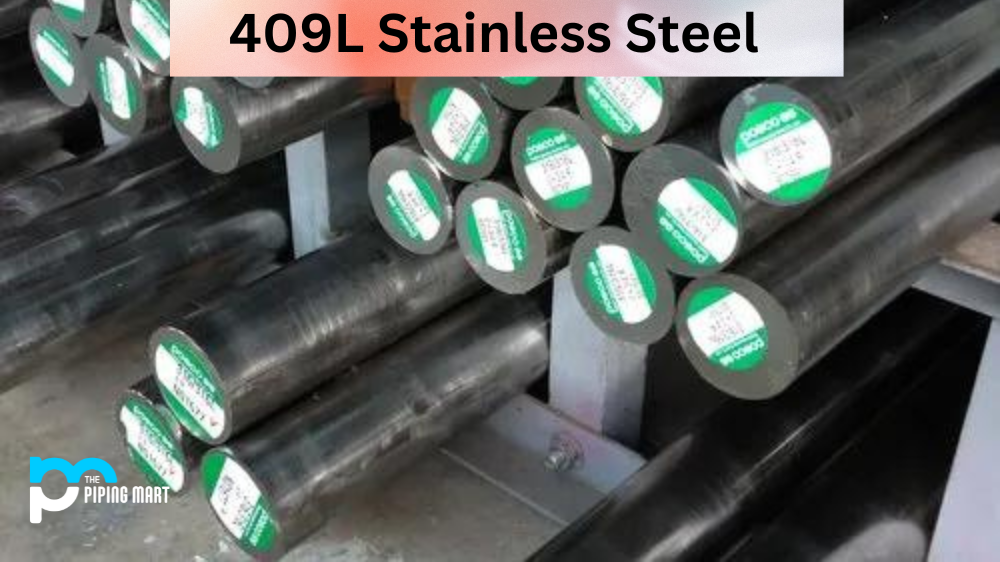If you’re in the engineering or manufacturing industry, you’ve likely heard of bronze 510. This alloy is popular for many applications because of its strength and corrosion resistance. But what exactly is bronze 510? What are its composition, mechanical properties, uses, heat resistance, heat treatment, and machining requirements? Let’s explore these questions and more in this blog post.
What is Bronze 510?
Bronze 510 is a metallic alloy of 85% copper and 15% zinc. This particular bronze has high strength, great creativity resistance, and excellent wear & corrosion resistance. It was developed in the 1950s for electrical components, such as contacts and connectors. Still, today, it remains a popular choice for its numerous applications in the electrical industry. Bronze 510 is also widely used for marine applications when building and repairing ships or offshore structures. A recent trend has seen the use of this highly durable bronze outside of commercial use in making sculptures and jewellery because of its tensile strength and beauty. Bronze 510 continues to be a go-to material for diverse uses.
What Forms is Bronze 510 Available at Piping Mart?
- Bronze 510 Fasteners
- Bronze 510 Screw
- Bronze 510 Stud Bolts
- Bronze 510 Washer
- Bronze 510 Coil
510 Bronze Composition
Alloy 510 is composed of 95% copper and 5% tin. This combination gives it excellent strength and wear resistance due to the hardness of the tin content. Additionally, tin helps the alloy resist corrosion better than other bronze alloys. It is also a good conductor of electricity and can be easily soldered or welded.
|
Element
|
Percentage
|
| Cu | 95 |
| Sn | 5 |
Alloy 510 Bronze Mechanical Properties
510 Bronze has a tensile strength range between 65-85 KSI (448-586 MPa), an ultimate shear strength between 18-24 KSI (124-165 MPa), a yield strength between 40-55 KSI (276-379 MPa), an elongation range from 16 to 22%, a Brinell hardness between 155 to 207 HBW and Rockwell hardness B90/C34 scale. These properties make it suitable for various types of applications such as bearings, gears, shafts, springs, and other components that need better wear resistance than brass provides but don’t require the high strength of steel alloys.
| Tensile Strength, min | Yield Strength, at 0.5% Extension Under Load, min | Elongation, 4x Diameter or Specimen Thickness, min | Rockwell “B” Hardness | Remarks | ||
|---|---|---|---|---|---|---|
| ksi | MPa | ksi | MPa | % | typical HRB | |
| 70 | 485 | 13 | 87 | |||
510 Bronze Chemical Properties
Bronze 510 is a significant alloy with exceptional strength, excellent corrosion resistance, and superior formability. This alloy includes approximately 63 per cent copper and 37 per cent zinc, with trace amounts of smaller elements. The chemical properties of C51000 allow it to resist many acids, chlorides, and salines due to its exceptional corrosion resistance. Additionally, Bronze 510 has great formability, allowing it to be used for various applications, such as parts for connectors, valves, and pumps since it can easily be shaped into complex shapes. Its low friction makes Bronze 510 suitable for hostile environments and demanding applications that need strong materials for transferring mechanical loads.
510 Bronze Physical Properties
510 Bronze is an alloy composed mostly of copper with a small amount of tin, making it a great choice for applications that involve physical contact over time, such as moving parts in machines. Its hardness makes it perfect for its heat and wear resistance, allowing it to survive in temperatures ranging from -20 to 240 degrees Celsius. Its elasticity also works to its advantage, so it can retain its properties without becoming brittle over time. UNS C51000 boasts corrosion-resistant properties due to the reduced risk of oxidation or rusting compared to other metals. It truly is an amazing material suitable for many applications!
|
Physical Properties 510 Bronze
|
|||||
|
-H04
|
|||||
|---|---|---|---|---|---|
| Density | 0.320 lb/in3 | ||||
| Ultimate Tensile Strength | 76 ksi | ||||
| Yield Tensile Strength | 75 ksi | ||||
| Shear Strength | 47 ksi | ||||
| Shear Modulus | 5,950 ksi | ||||
| Hardness Rockwell | Brinell | B88 | 175 | ||||
| Elongation at Break Percentage | 15% | ||||
| Modulus of Elasticity | 16,000 ksi | ||||
| Poisson’s Ratio | 0.34 | ||||
| Machinability Percentage | 20% | ||||
| Melting Point | 1,770-1,930 °F | ||||
| Specific Heat | 9.08 x 10^-2 BTU/lb-°F | ||||
| Thermal Conductivity | 583 BTU-in/hr-ft^2-°F | ||||
| Electrical Conductivity | 18% IACS | ||||
Bronze UNS C51000 Thermal Properties
| Treatment | Minimum* | Maximum* |
|---|---|---|
| Annealing | 900 | 1250 |
510 Bronze Material Properties
Phosphor bronze 510 is a tough, malleable metal material that can resist high temperatures and corrosion. Its wear resistance and fatigue strength make it well-suited for machinery applications and electrical pathways. Its ability to conduct electricity is also noteworthy since phosphor bronze 510 features excellent electrical conductivity and low-temperature coefficient of resistivity ratings. It has a tensile strength of 450 MPa and an electrical resistivity ranging from 0.028 to 0.046, while its elongation at break reaches up to 26%. In addition, phosphor bronze510 offers good cold formability and machinability with easy solderability – making it the preferred choice for many engineering projects requiring an alloy with these attractive attributes.
510 Bronze Equivalent Specification
| CDA | ASTM | SAE | AMS | Federal | Military | Other |
|---|---|---|---|---|---|---|
| Bronze 510 C51000 | B139 B139M |
J461 J463 |
4625 |
Alloy 510 Bronze Uses
Phosphor Bronze 510 has many uses due to its strong mechanical properties and corrosion resistance. It is most commonly used in engineering applications such as marine components like propellers, pump impellers, and valves; automotive components like bushings; electrical connectors; aircraft parts; fastening devices; fittings; nuts & bolts; screws & pins; switches & contacts; washers & spacers; welding rods & electrodes; shipbuilding industries etc. It is also used for decorative purposes in architecture and sculptures due to its attractive golden colour, which can be maintained with protective coatings or patinas.
- Bearings
- Coins
- Tools
- Jewellery
- Decorative Objects
- Musical Instruments
510 Bronze Corrosion Resistance & Heat Resistance
Bronze 510 has excellent corrosion resistance due to the presence of tin in its alloy composition, which helps it withstand harsh environments like seawater where other metals would corrode quickly. Its high melting point (around 910 °C) also makes it resistant to high temperatures. It is suitable for use in high-temperature processes like forging or welding, where other metals would easily melt or lose their shape. Furthermore, its high heat conductivity makes it ideal for heat exchangers and radiators where other metals may not be able to dissipate heat efficiently enough, resulting in higher energy consumption costs over time.
510 Bronze Heat Treatment & Machining
Although bronze Alloy 510 requires no special heat treatment before use, it can be hardened through cold working or annealing, depending on its application. For machining operations such as cutting or drilling into the metal, standard drill bits should be used along with lubricants such as cutting oils or coolants to reduce friction during operation, which could cause damage to your tools or materials if left unchecked over time. Additionally, special tools such as carbide inserts may be necessary when dealing with tougher materials like stainless steel or nickel alloys. These cannot be machined with standard tooling options today because they are harder than bronze alloys like bronze 510.
Conclusion
In conclusion, UNS 51000 is a great option when looking for a strong yet lightweight material suitable for engineering applications that require both wear resistance and corrosion protection from harsh environments while still maintaining a certain level of flexibility during machining operations thanks to its ductility at higher temperatures compared to other metals available on today’s market! So, if you’re looking for an affordable yet effective option for material solutions, look no further than bronze 510!

Pipingmart is B2B portal specializes in industrial, metal and piping products. Also, share latest information and news related to products, materials and different types grades to help business dealing in this industry.




